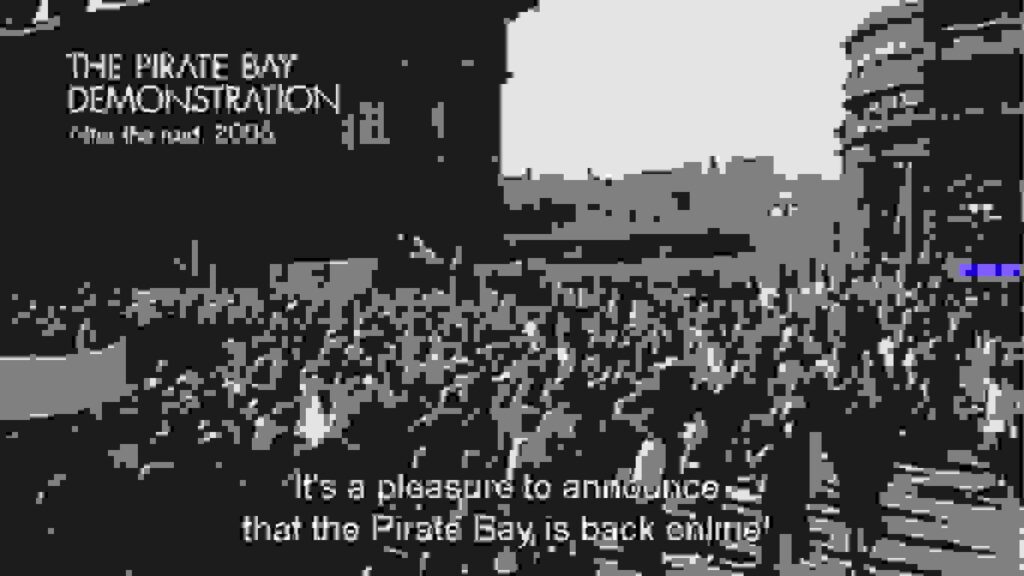While a massive police raid in 2006 left The Pirate Bay largely unscathed, a recent, seemingly less conspicuous assault in early December has dealt a far more devastating blow, capturing widespread attention. Let’s reflect on one of the most pivotal months in the history of the torrent scene.
On May 31, 2006, the BitTorrent community faced a seismic event.
The Pirate Bay, renowned worldwide as a hub for torrents, was dealt a crippling blow. Acting on intel provided by global entertainment giants through local anti-piracy outfit Antipiratbyran, Swedish authorities conducted a raid on the PRQ datacentre, seizing all hardware associated with the site.

However, akin to a phoenix’s resurgence, just three days later, The Pirate Bay defiantly returned online. Utilizing a backup meticulously crafted by Fredrik Neij, known as TiAMO, the site resurfaced. Neij, addressing an eager audience in Sweden, delivered a bold statement heralding the site’s revival.
“It’s a pleasure to announce that the Pirate Bay is back online. In your face, Hollywood,” the Swede declared. TPB was back.

In the years that ensued, The Pirate Bay burgeoned into a colossal entity, its size and stature seemingly impervious to the passage of time, buoyed by an unwavering legion of devoted followers.
However, in November 2014, history circled back to confront Neij. Arrested at the Laos/Thai border, he was extradited to Sweden and confined to a prison cell, marking a dramatic turn of events for the once-invincible figure.
Then, on a December morning, over eight years since the initial raid, the Rights Alliance (formerly Antipiratbyran) underscored their enduring memory and resolve. After meticulous investigations and persuasive presentations, law enforcement descended upon a datacenter in Nacka, promptly dismantling The Pirate Bay’s operations once again.
The shutdown reverberated across the online community, eclipsing previous file-sharing shutdowns in its magnitude. Tens of millions of anxious Pirate Bay users grappled with disbelief as speculation swirled. Was it a technical glitch? A hoax? Neither, as it turned out.
Amidst the frenzy of discussions, a prevailing query emerged: Hadn’t The Pirate Bay rendered itself impervious to raids? Wasn’t its decentralized infrastructure immune to law enforcement’s grasp? And crucially, why the delay in restoration? Who was tasked with orchestrating the backups this time, and what was causing the delay in the site’s resurgence?
As days turned into weeks, it dawned on many: this wasn’t the Pirate Bay of yesteryears. Times had evolved, as had the people who once shaped its legacy.
The original team that propelled the site to fame had dispersed long ago, and the fervent spirit of Piratbyran, the Pirate Bay’s founding collective, had waned after years of championing unparalleled ideals of cultural sharing.
“We weren’t exactly caught off guard by the raid. It’s all part of the game, really,” confided a Pirate Bay insider in the aftermath of the shutdown. “But it did prompt us to reassess. How long can we keep this up?”
In the void left by the Pirate Bay’s absence, a fascinating transformation unfolded. Previous efforts to restrict access to the site in countries like the Netherlands and the United Kingdom inadvertently paved the way for a new breed of successors.
Mirrors and proxies that once circumvented blocks now emerged as full-fledged clones of the iconic site. Some early attempts sparked controversy, raising concerns of impersonation and malware. Yet others, like ThePirateBay.com.ua, managed to capture the essence of the original, complete with user forums and a trove of comments reminiscent of its heyday.
But make no mistake: none of these imposters are the genuine Pirate Bay reborn. Nonetheless, many have thrived on the strength of familiar domains and a competent torrent index. Of particular note is the initiative spearheaded by the minds behind isoHunt.com, now reincarnated as isoHunt.to.
TheOpenBay project emerges as a beacon of hope amid the turbulence following The Pirate Bay’s disappearance. Its open-source model has sparked a proliferation of mini TPB clones, catapulting the initiative to the zenith of developer platform Github.
This venture holds promise, offering a streamlined entry point for aspiring administrators into the torrent realm. Yet, it’s essential to recognize that while OpenBay presents an alternative avenue, it cannot fully supplant The Pirate Bay’s legacy.
The vanishing act of The Pirate Bay has been a whirlwind of emotions. Throughout the month, anticipation for its return or the emergence of a worthy successor has gripped millions of users.
Four days shy of Christmas, a glimmer of hope flickered to life as the original Pirate Bay domain, ThePirateBay.se, reawakened. Though devoid of its iconic front page, a defiant pirate flag unfurled on the site, accompanied by enigmatic clues, keeping the spirit of piracy alive and buoying hopes for a resurrection.
As of the latest update, The Pirate Bay has been offline for a record-setting three weeks. This unprecedented hiatus raises pertinent questions: Will the site make a comeback, or are underlying technical hurdles impeding its return?
Regardless of the outcome, the dawn of 2015 may mark a chapter without The Pirate Bay. Yet, the community must reconcile with this reality. While the landscape may shift, file-sharing’s narrative transcends any single entity—The Pirate Bay’s absence may herald change, but it certainly won’t spell its demise.